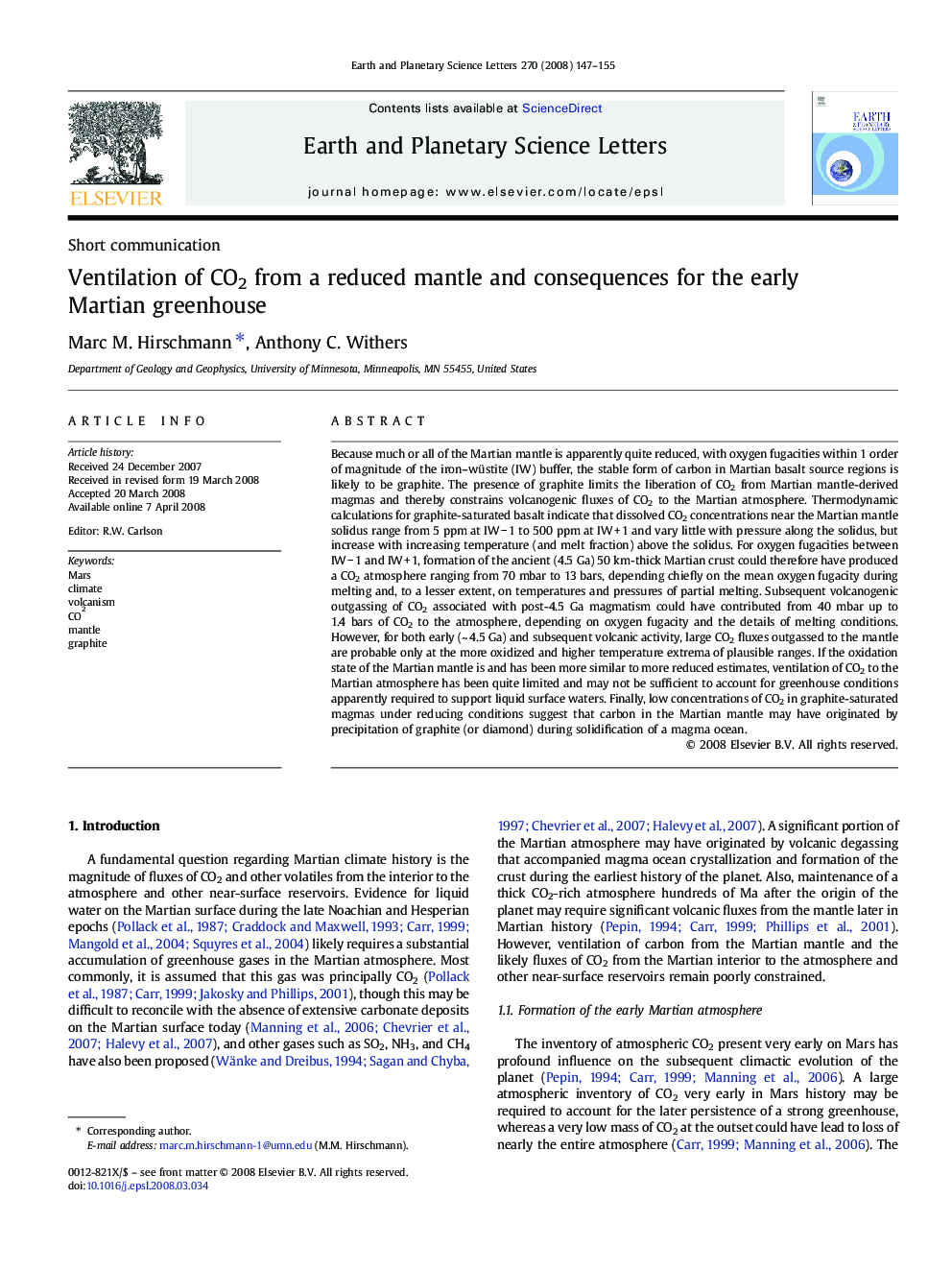| Article ID | Journal | Published Year | Pages | File Type |
|---|---|---|---|---|
| 6431093 | Earth and Planetary Science Letters | 2008 | 9 Pages |
Because much or all of the Martian mantle is apparently quite reduced, with oxygen fugacities within 1 order of magnitude of the iron-wüstite (IW) buffer, the stable form of carbon in Martian basalt source regions is likely to be graphite. The presence of graphite limits the liberation of CO2 from Martian mantle-derived magmas and thereby constrains volcanogenic fluxes of CO2 to the Martian atmosphere. Thermodynamic calculations for graphite-saturated basalt indicate that dissolved CO2 concentrations near the Martian mantle solidus range from 5 ppm at IW â 1 to 500 ppm at IW + 1 and vary little with pressure along the solidus, but increase with increasing temperature (and melt fraction) above the solidus. For oxygen fugacities between IW â 1 and IW + 1, formation of the ancient (4.5 Ga) 50 km-thick Martian crust could therefore have produced a CO2 atmosphere ranging from 70 mbar to 13 bars, depending chiefly on the mean oxygen fugacity during melting and, to a lesser extent, on temperatures and pressures of partial melting. Subsequent volcanogenic outgassing of CO2 associated with post-4.5 Ga magmatism could have contributed from 40 mbar up to 1.4 bars of CO2 to the atmosphere, depending on oxygen fugacity and the details of melting conditions. However, for both early (~ 4.5 Ga) and subsequent volcanic activity, large CO2 fluxes outgassed to the mantle are probable only at the more oxidized and higher temperature extrema of plausible ranges. If the oxidation state of the Martian mantle is and has been more similar to more reduced estimates, ventilation of CO2 to the Martian atmosphere has been quite limited and may not be sufficient to account for greenhouse conditions apparently required to support liquid surface waters. Finally, low concentrations of CO2 in graphite-saturated magmas under reducing conditions suggest that carbon in the Martian mantle may have originated by precipitation of graphite (or diamond) during solidification of a magma ocean.
